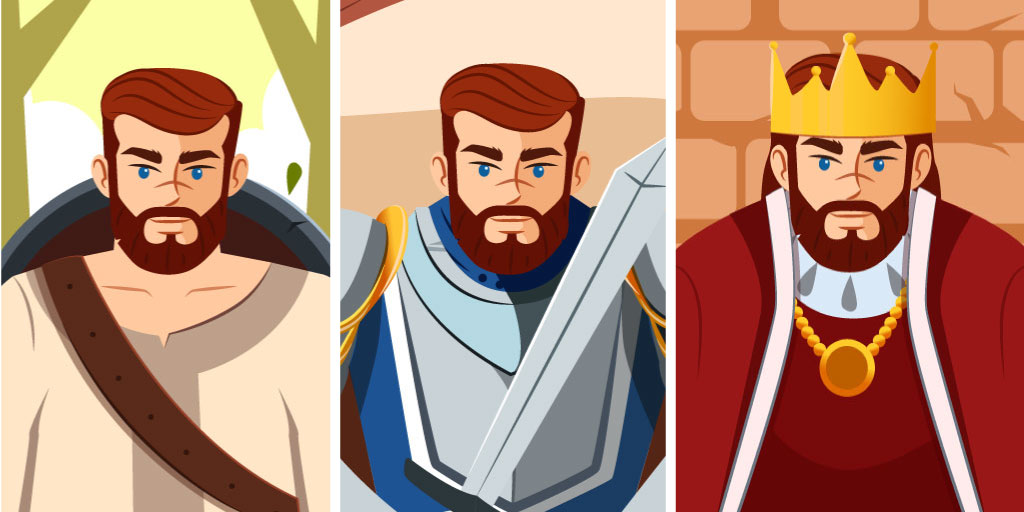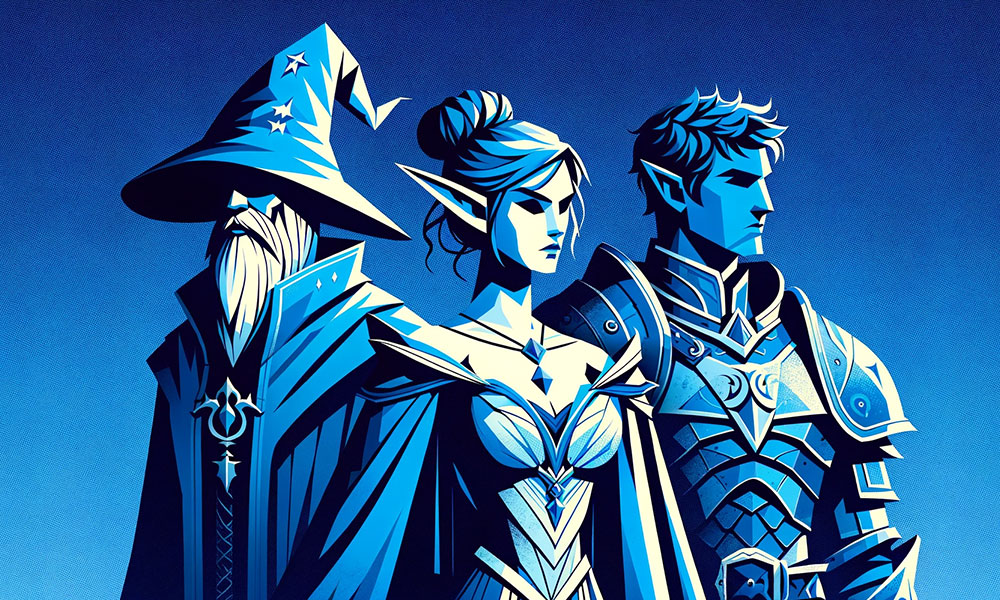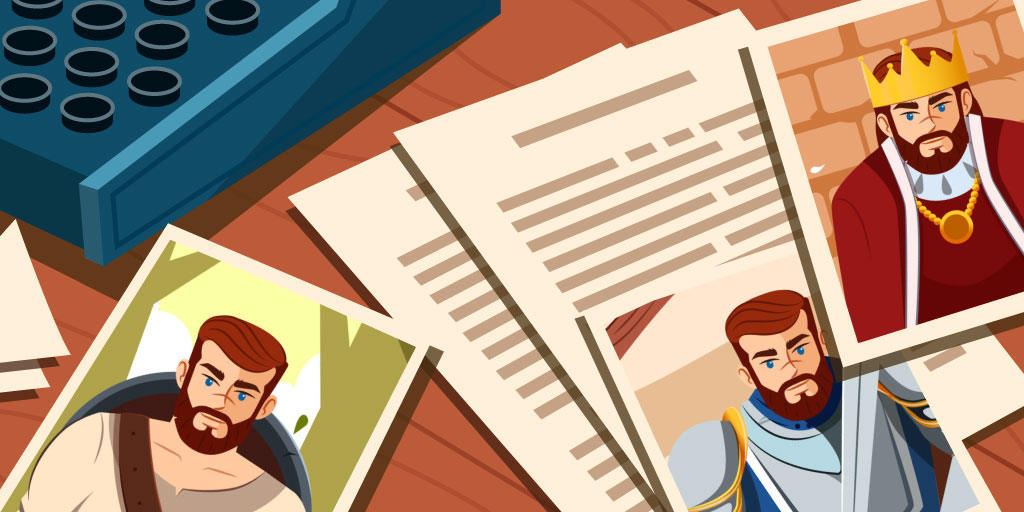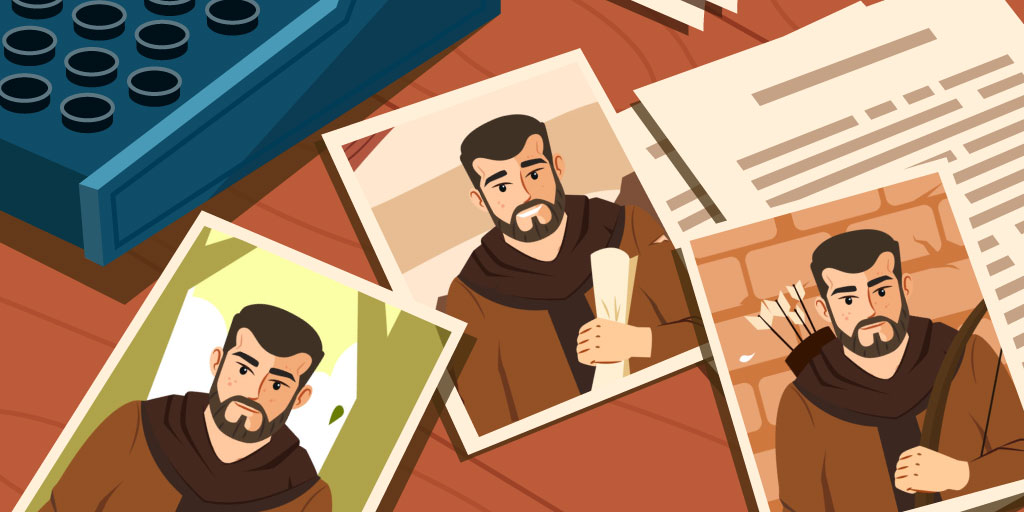Characters can be classified into two main categories: dynamic and static. While both types play an important role in storytelling, they differ in their development throughout the narrative. A dynamic character undergoes a profound change throughout the story, whereas a static character remains relatively unchanged.
In this article, we will explore these two types of characters to help you write well-rounded and believable characters that drive your plot forward and convey your intended messages effectively.
What Is a Dynamic Character?
A dynamic character is one that experiences a substantial change or transformation throughout a story. These changes can appear in their personality, beliefs, or behavior, and result from the events that they experience.
Dynamic characters are usually complex and multidimensional, and their evolution can be a major focus of the narrative. They enable authors to convey messages that are deeper than just the surface story.

Characteristics of Dynamic Characters
Dynamic characters are a cornerstone of compelling storytelling. They are appealing to readers, who will find it easier to engage with a character who experiences growth and transformation.
Let’s delve deeper into dynamic characters by describing their most relevant characteristics:
- Undergo change: Throughout the course of the story, dynamic characters will go through substantial changes. Their personality, views, and behavior may alter over time, as a result of their experiences and interactions with the world around them. This change can be shown as:
- Emotional growth: As a response to the difficulties or events they experience, characters might see their actions, thoughts, and relationships altered as they evolve and mature.
- Changes in beliefs: Their experiences or relationships can cause their opinions, values, or morals to change. They might start to doubt their established convictions, acquire fresh viewpoints, or experience a change of heart on significant matters.
- Evolving motivations: They may grow to have new goals, desires, or ambitions as the story goes on. It is possible for them to start focusing on deeper goals instead of fleeting desires, or they might find a new passion that fuels them.
- Learning from mistakes: As part of their development, they may make mistakes and learn from them. They gain wisdom or insight from their failures, which will contribute to their growth and move the story forward to a happy ending.
- Conflict or struggle: Conflict or struggle is a common catalyst for the transformation of literary and cinematic characters, as they must face obstacles or difficulties, which may lead to emotional upheaval.
- Multidimensional: They have a variety of characteristics and motivations, and the changes they go through may reveal new facets of their personalities. This creates round characters who can be perceived as real human beings, with their own desires and their own inner world, and therefore becoming relatable for readers.
- Self-reflection: It is common for dynamic characters to engage in self-reflection, considering their own attitudes, sentiments, and actions. This will in return sustain and encourage their evolution.
- Story focus: They are often the focus of a story and their transformation provides the deeper messages that the narrative teaches. In fact, many storytelling techniques rely on the evolution of their main character to organize and develop the structure of a narrative (for instance, by creating a want vs. need dilemma).
Character Development Quiz (Easy)

Examples of Dynamic Characters
Since dynamic characters are the ones we remember long after finishing a novel, there are many examples that come to mind.
The Losers in It
While many people may think of It by Stephen King as a novel about fighting a killer clown, it is also a story of the extreme transformation of seven characters. Bill, Beverly, Ben, Eddie, Richie, Mike, and Stan all start off as a group of outcast kids who drown in difficulties.
Battling everything from a speech disability, guilt, and grief (Bill), an abusive father and poverty (Beverly), obesity, loneliness, and bullying (Ben), poor health and timidity (Eddie), fear and denial (Richie), exclusion and bullying due to race and religion (Mike and Stan), they are all completely transformed by the end of the story.
Through their deeply frightening interactions with Pennywise and their tight friendship with one another, the first six develop new strength, resilience, belief in themselves, and emotional and physical resources. After initially acquiring some strengths of his own, the fear later overcomes Stan and he kills himself.
Celie in The Color Purple
In the beginning of The Color Purple, by Alice Walker, Celie is a young African American woman living in poverty in rural Georgia. Abused by her father and later her husband, she is forced to marry a man she does not love.
Through her relationships with other women, she develops resilience, strength, and hope. Her beliefs regarding racism and patriarchy change to the point where she becomes an advocate for women’s rights and social justice, and she ultimately finds a sense of purpose and meaning in her life.
As such, she transforms from a victim of abuse and oppression into a strong and empowered woman who fights for her own rights and the rights of others.
Macbeth in Macbeth
At the beginning of this William Shakespeare play, Macbeth is brave, respected, and praised for his loyalty to King Duncan. But his encounter with the three witches and their prophecy of his future as king serves as a major transformative event that serves as the inciting incident for the tragedy that follows.
He becomes increasingly consumed by his ambition and desire for power, and eventually murders King Duncan to take the throne. His guilt and paranoia drive him to become ruthless and tyrannical, killing anyone who poses a threat to his rule, including children.
Plagued by his conscience, tormented by guilt, and conflicted about his relationship with Lady Macbeth, he never stops evolving until he is killed in battle by Malcolm, the rightful heir to the throne.
How to Write Dynamic Characters
To write compelling and memorable stories, you must create dynamic characters that resonate with readers and feel like real people. In this section, we will explore some strategies for crafting these characters and their transformative journeys.

Create a Clear Goal
Give your character a clear goal. They are more likely to be dynamic if they have an obvious objective, whether that is to build a romantic relationship, seek revenge, or defeat an enemy. Their pursuit of that goal will force them to face their weaknesses and fears, resulting in profound growth and change.
A character that is desperate for a romantic relationship to succeed, for example, will be forced to overcome insecurities, jealousy, and other personal characteristics that are destructive to relationships.
Create Conflict
Character development requires conflict. Your heroes have to experience difficulties and obstacles that force them outside of their comfort zone, whether it be an external conflict with another character or an internal battle with themselves. People automatically develop outside their comfort zones.
Further, while taking your character through these conflicts, show the consequences of their struggle on their thoughts, feelings, and actions, since that is where their transformation will happen.
For instance, someone who is afraid of drowning may have to jump into a river to save a loved one, and in doing so, learn to be confident and empowered.
Let Characters Make Mistakes
Allow your character to be flawed and make mistakes. Flaws can change into strengths as your protagonist learns difficult lessons. Additionally, by allowing your character to make mistakes, you can create opportunities for them to learn from their experiences and become more dynamic and interesting.
For example, someone who makes a bad decision that results in the death of a loved one may be forced to confront their own recklessness or selfishness.
Develop a Backstory
Your character’s past experiences and relationships shape who they are in the present, especially with regard to flaws, weaknesses, emotional depth, and fears. A sufficiently detailed backstory can provide opportunities for growth.
The most common example is a character with a history of abuse who must confront their trauma in order to heal and become a more confident person. But past experiences can also trap them into typical patterns of behavior from which they need to break free, such as dishonesty, withdrawal, laziness, etc.
Create a Character Arc
The inner, transformative trip your character takes throughout the narrative is known as a character arc. To be dynamic, they must have a distinct arc that depicts their transformation and growth from the start of the story to its conclusion.
They can gradually transform from being flawed and unaware of their flaws to being self-aware and actively working to improve themselves, or they can go from being weak and vulnerable to being strong and resilient.
Aimless to purposeful, cynical to hopeful, passive to active, and selfish to selfless are four other popular character arcs.
Focus on Relationships
Your character’s growth and development can be significantly affected by the relationships they have with others. In particular, relationships that involve conflict can be especially impactful. When characters are faced with other people’s opposing beliefs, goals, or emotions, they are forced to confront their own emotions and assumptions, and to consider alternative perspectives. This can lead to a deeper understanding of themselves and others.
For example, they can transform from closed off to vulnerable, or from isolated to connected through close relationships. Close connections can also help them go from selfish to selfless or from combative to cooperative.
What Is a Static Character?
A static character is one that doesn’t alter significantly or go through a transition during the course of the story. From the start of the story to its conclusion, they hold the same opinions and act in approximately the same ways.
While they may not undergo significant changes, they can still be important and memorable characters. They provide contrast to the dynamic characters to highlight their transformations. They add additional perspectives on events and provide a sense of stability in the midst of the upheavals and changes experienced by their dynamic peers.

Characteristics of Static Characters
Static characters, while not undergoing significant transformation, can still serve a crucial role in a story. Their consistent personality and unchanging traits can serve as a foil to the dynamic characters around them.
Let’s explore them further by outlining their most important traits:
- Consistent personality: Characters who are static maintain their personalities throughout the narrative. Their experiences or relationships don’t change their beliefs, values, or morals, which remain fixed from beginning to end. Their objectives and desires remain constant throughout the story. Because of that, they don’t significantly alter their attitudes or habits either, which can make them predictable in the long run.
- Limited character development: They don’t undergo significant character development or growth, either because they are averse to change or have a rigid perspective, or because readers don’t learn enough about them to trace their growth.
- Memorable traits: Despite their static nature, they may have memorable traits or quirks that make them stand out to readers and from other characters in the narrative.
- Supporting characters: Rather than being protagonists, they frequently, but not always, play supporting roles. They don’t have their own character arcs, but they do aid in the growth of the dynamic characters, either by being positive role models or by serving as a cautionary tale of what not to become.
- Fixed roles: They frequently have a specific function in the story, such as offering a stable presence, acting as a counterpoint to the dynamic characters, or emphasizing the cultural or societal norms of the setting (such as racist or sexist prejudices).
- Good antagonists: Because they don’t have to change, they often make very good antagonists, especially the evil, psychopathic, serial killer types.
Examples of Static Characters
Because static characters provide consistency and stability, they are usually remembered for being obnoxious or evil, or they’re barely remembered at all. Below are some examples of both types.
Mrs. Danvers in Rebecca
Mrs. Danvers, the housekeeper of Manderley, is an important character in Daphne du Maurier’s novel Rebecca and the story would not have been able to exist without her. Still, she does not develop or change much at all.
She is cold, intimidating, controlling, fiercely loyal to the memory of Rebecca, and resentful of the new Mrs. de Winter. Her role is the fixed one of creating tension in the story by manipulating and undermining the narrator.
Dorothy in Where are the Children?
In Mary Higgins Clark’s best-seller Where are the Children?, Dorothy works with Ray Eldredge in his real-estate business. While she engages in some actions that drive the plot forward, such as missing a key sign of where the kidnapped kids were held, most readers are unlikely to remember her unless they reread the story.
She plays a supportive role to the family at the heart of the events and is certainly no flat character, as readers are treated to her anxiety over the fate of the kids and her guilt for missing some clues. But her basic loyalty, decency, kindness, and compassion remain constant during the novel.
Bob Ewell in To Kill a Mockingbird
Harper Lee’s To Kill a Mockingbird contains a racist and abusive character called Bob Ewell, who helps his daughter to lie in the process of falsely accusing Tom Robinson of rape.
He remains consistent in his beliefs and behavior throughout the novel, serving as a static character who highlights the prejudices and injustices in society during the time period of the story. Another one of his roles is to serve as a counterpoint to the dynamic Atticus Finch, who represents the values of justice and equality.
How to Write Static Characters
Every story needs static characters to serve as antagonists, supply stability, contribute extra viewpoints, or provide contrast with their dynamic peers. Let’s explore some tips and strategies for you to effectively create static characters that enhance your story.

Make Them Interesting
There is no reason why static characters should be boring or be flat characters. While you don’t have to write greatly detailed back stories, personalities, and motivations for all of them, readers still want to know where some of them are from, who they are, and what they want.
Sherlock Holmes and Dr. Watson are both well-developed and written with depth and nuance, but they are still static.
Define Their Role
Static characters should have a clear role and purpose in the story. They can provide stability, influence the protagonist, highlight cultural norms like bigotry, pick fights with the other characters, or whatever else you can imagine.
Once you have defined their purpose in your story, you can develop them further so they are both interesting and suitable for the role. For example, if you require a serial killer, make them intelligent, manipulative, obsessive, lacking empathy, and sexually deviant, all after creating a dysfunctional upbringing.
Use Stereotypes Carefully
Static characters may sometimes be stereotypical or one-dimensional, as the serial killer above. But you should take care not to rely on offensive or boring stereotypes if you want your story to be engaging.
One way to do this is through a unique backstory that separates your static character from others of the same type. Another way is to start with a stereotype but then add depth and complexity to their personalities.
Warren Hoyt, the killer in Tess Gerritsen’s first two Rizzoli and Isles novels, has all the stereotypical characteristics above, but his backstory includes a one-of-a-kind expulsion from medical school and he has a uniquely terrifying way of killing.
Challenge Your Static Characters
To show what fixed characteristics your static character has, make your story world challenge them. If they are compassionate, for example, throw situations at them in which they have to choose between acting on reason or compassion.
It’s a good way to establish their traits into your readers’ minds, and it’s also the best method to show rather than tell who they are.
Explain the Lack of Change
Give the character a good reason for remaining static. They may have established habits and routines or they may simply lack the motivation to change because they are happy with their current circumstances. Family upbringing, social norms, a lack of appropriate transformative events, or poor reflecting skills can also contribute to an absence of transformation.
Emphasize Their Strengths or Flaws
The beauty of static characters is their strengths that should not and do not change, or their weaknesses that should, but do not, change.
One major reason for a character to remain consistent is because they are already strong, confident, fair, and compassionate. It is useful to bring these positive characteristics out in all their glory so your readers cannot miss them.
But occasionally, characters should change but cannot and are brought down by their flaws. Captain Ahab in Herman Melville’s Moby-Dick, for example, is obsessed with a vengeful hunt of a white whale, and is eventually killed by it.
Build Contrast with a Dynamic Character
One method to add depth and meaning to your story is to create a dynamic and a static character with approximately the same characteristics. Then, as the former transforms and grows, the latter’s inability to do so can be used as a contrast and a lesson.
Static vs. Dynamic Characters
While static characters largely remain constant throughout a story, dynamic characters experience tremendous growth and change.
Both types are necessary for a well-rounded story, with static characters providing the stability and contrast to their dynamic peers, and the dynamic characters supplying the emotional depth and embodying the conflict at the heart of the story.

Here is an overview of the most important differences between dynamic and static characters.
| Dynamic Characters | Static Characters |
|---|---|
Undergo significant growth and transformation | Remain relatively unchanged |
Display personality changes | Display a consistent personality |
Experience changes in beliefs and attitudes | Experience very few changes in beliefs and attitudes |
A large character arc with much development | A flat character arc with little development |
Often serve as the protagonists | Often serve as the antagonists or supporting characters |
Drive the plot forward | Provide stability |
Often have a rich and complex backstory | May or may not have a detailed backstory |
Typically complex and multi-dimensional | Typically used to provide stability and emphasize themes |
Are All Main Characters Dynamic?
No, not all main characters are dynamic. While many main characters transform throughout the story, some remain relatively fixed.
Hannibal Lecter in The Silence of the Lambs is an example of a main character whose motivations and personality don’t change throughout the story.
Are All Side Characters Static?
No, not all side characters are static. While side characters may play a supporting role in the story, they can still undergo personal growth.
Abigail, the teenage girl in Liane Moriarty’s Big Little Lies is an example of a side character that grows and changes throughout the book.
Can a Static Character Become a Dynamic Character?
It is possible for a static character to become dynamic, although then it is by definition called a dynamic character. This occurs when what seemed like a static character experiences a significant event that changes them for the rest of the pages.
For example, the beliefs and attitudes of Nick Carraway in The Great Gatsby do not change until very late in the book.
Final Thoughts
Any writer who wants to develop interesting and memorable characters in their writing must be aware of the distinction between dynamic and static characters. Static characters don’t change all that much throughout a novel, while dynamic ones go through major personal growth. Both types of characters can serve important roles in a narrative.
By utilizing the tips and strategies outlined in this article, you can create both dynamic characters that captivate readers and drive the narrative forward, and static characters that are memorable and serve their plot roles with aplomb.
Character Development Quiz (Hard)








